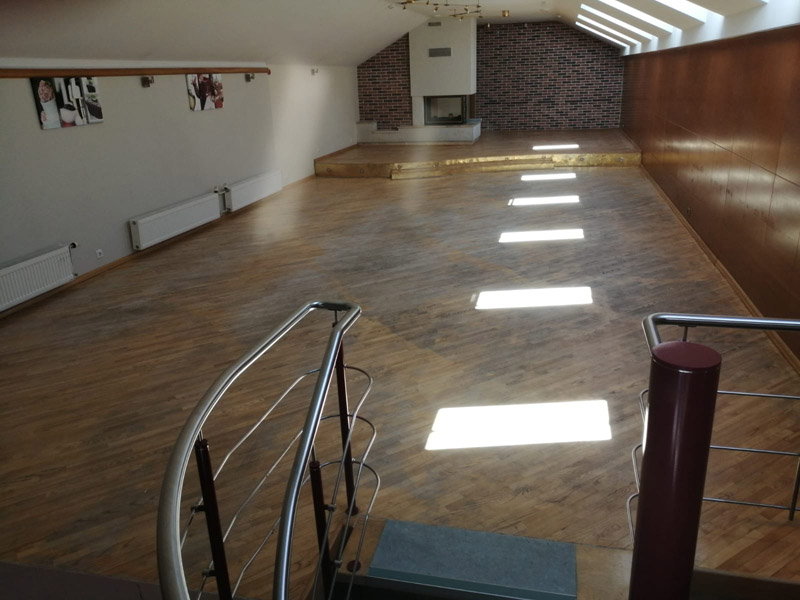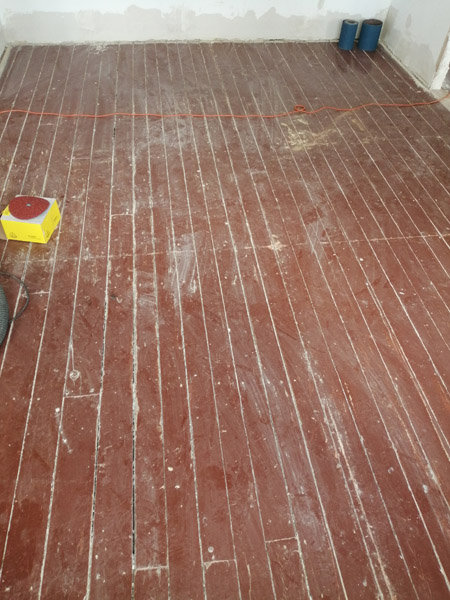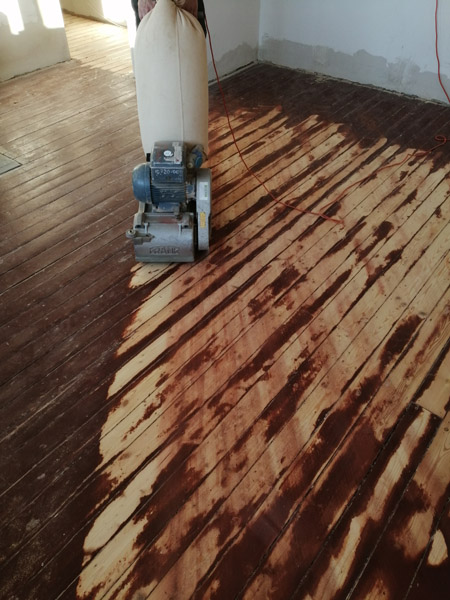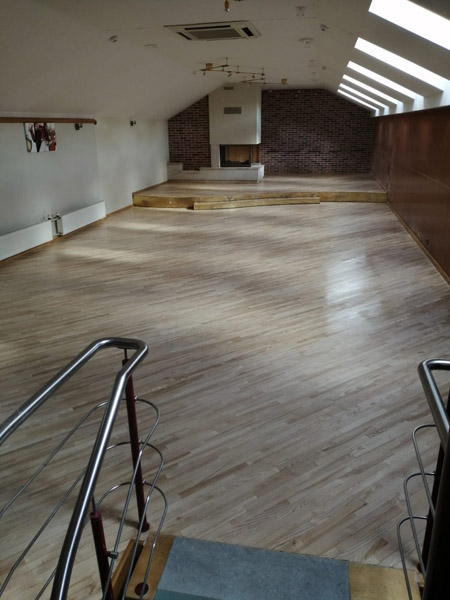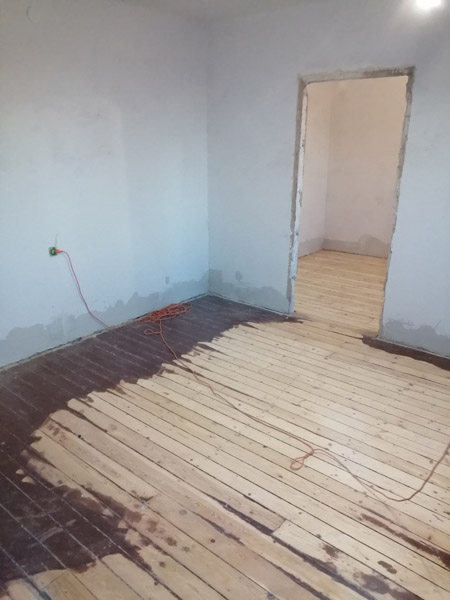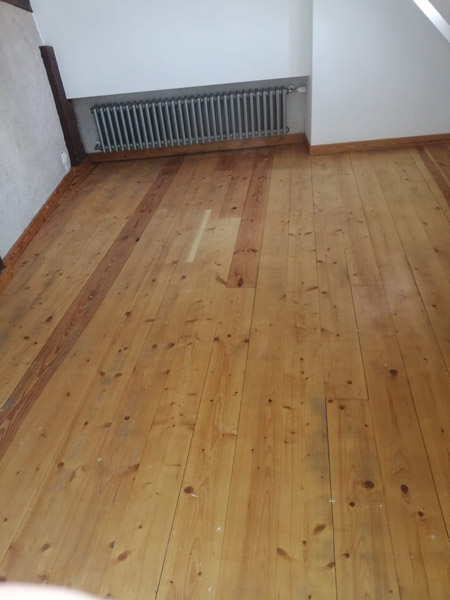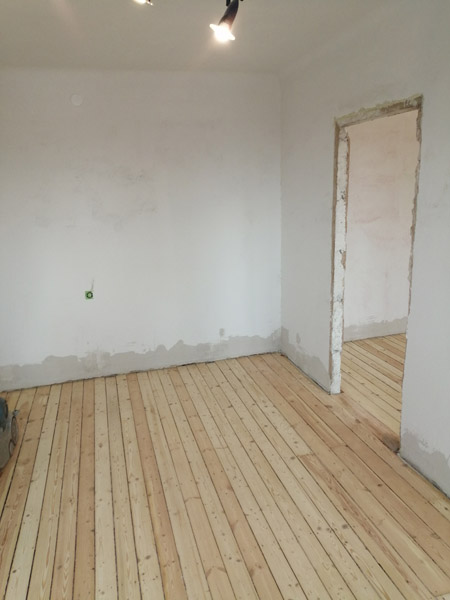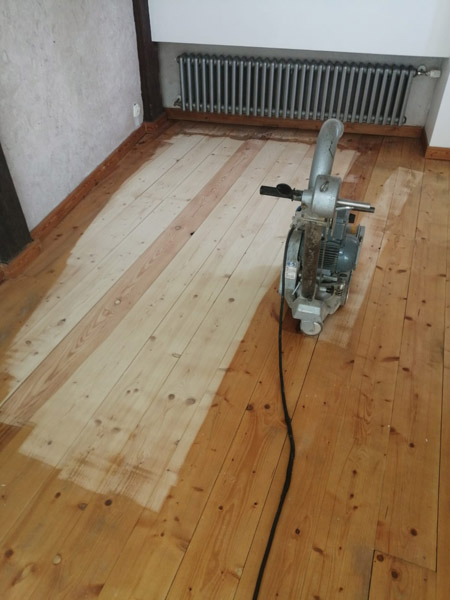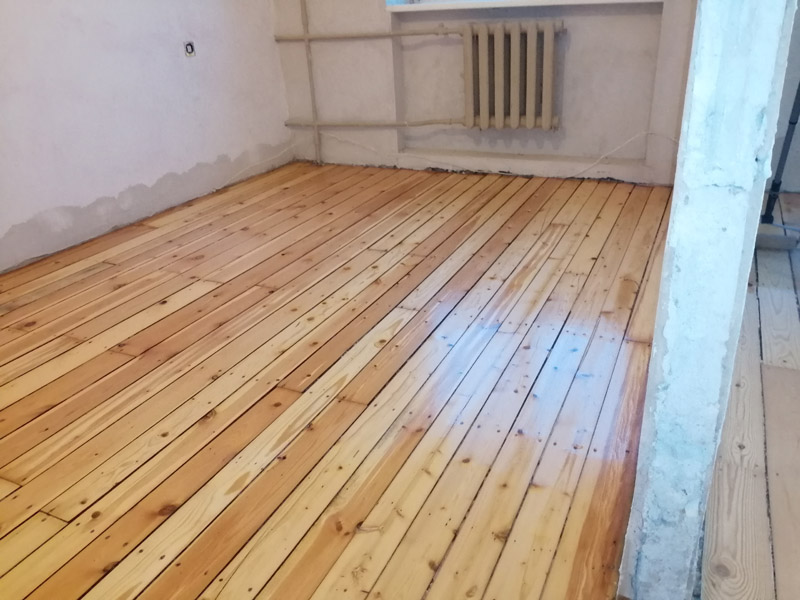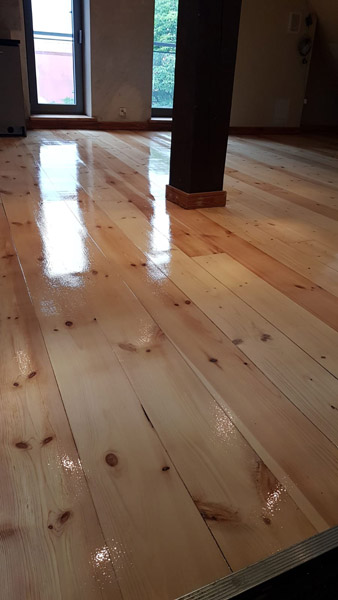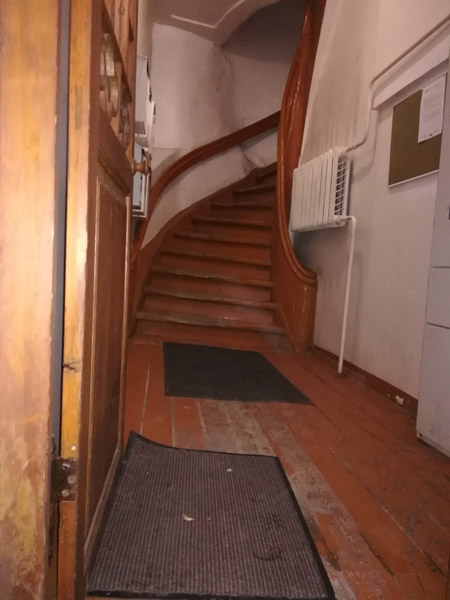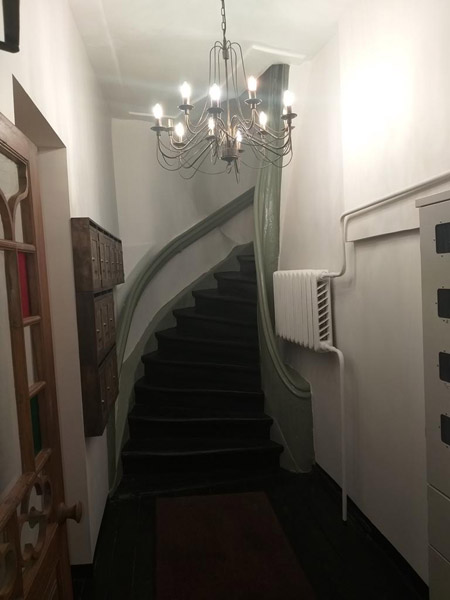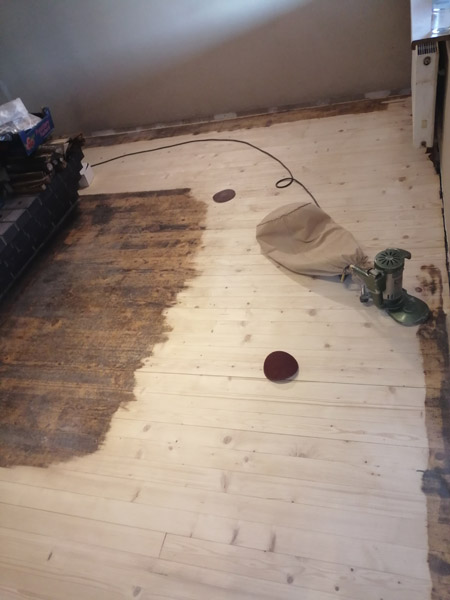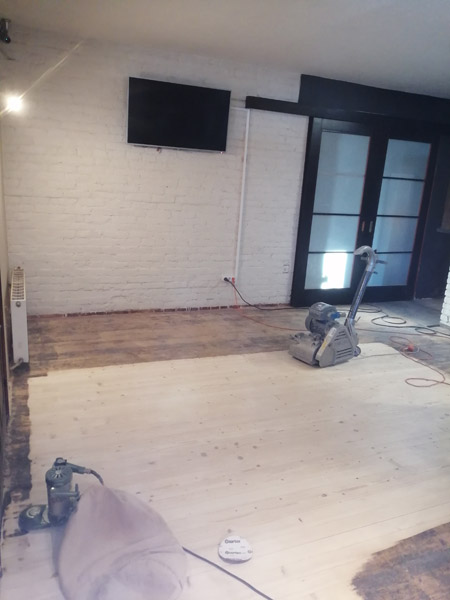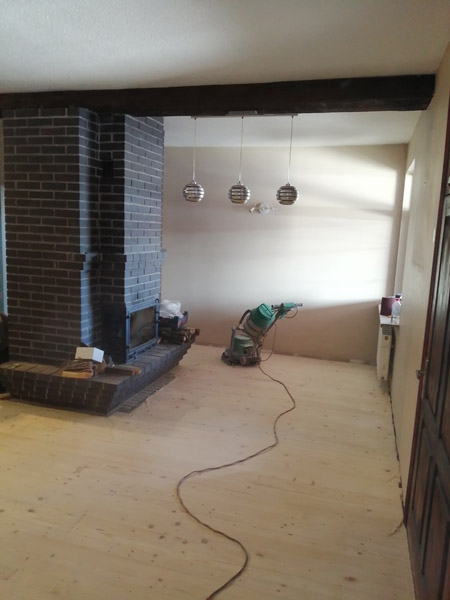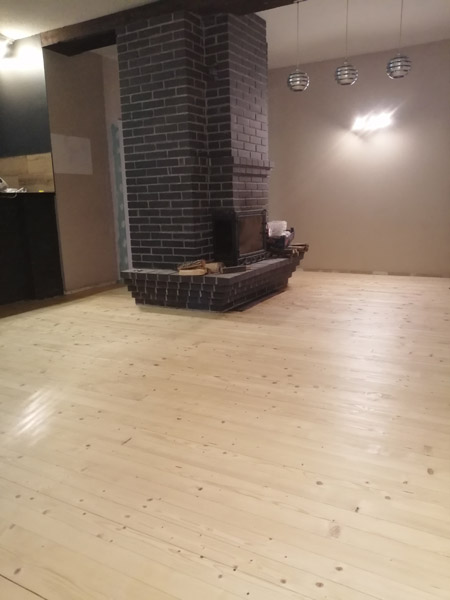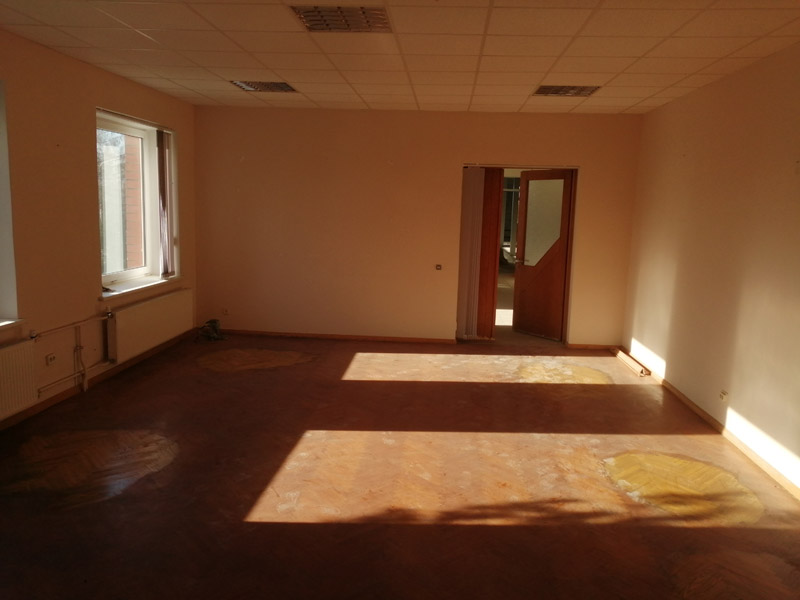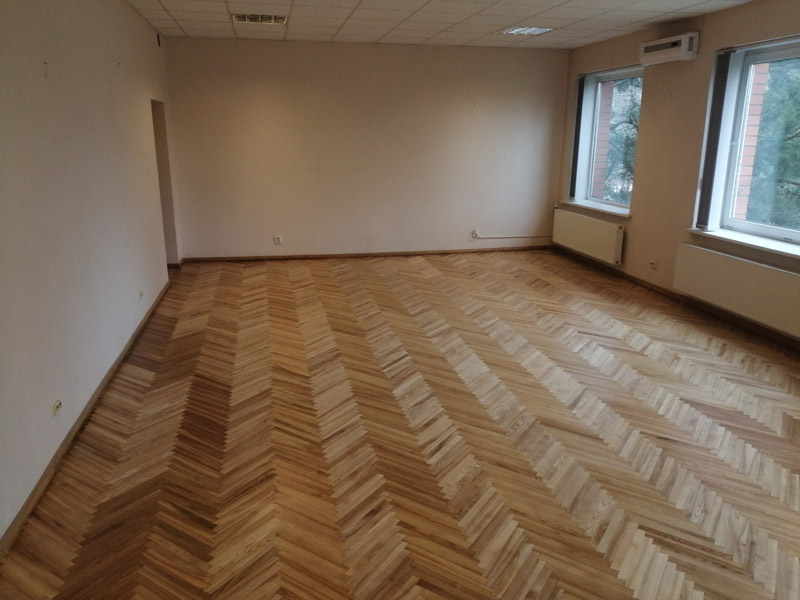We offer:
We divide our primary activities into two categories – refinishing parquet and plank floors and creating new wooden floors. We would be happy to tell you more about what this means!
Parquet and plank floor renovation
It is said that a wooden floor can last up to 100 years. Is this true? Yes, but it can be much less if the floors are not properly maintained. That’s why it’s important to give your wooden floor a “clean” and renovate it from time to time to refresh the exterior and renew the protective layer of the wood to prolong its life.
How do you know when it’s time to renew your floor? Parquet is usually made from trees such as oak or ash, which are noble trees. These are relatively hard and wear-resistant woods, whereas plank flooring is quite common in soft woods such as pine or spruce. Both of these options require floor renovation, but the difference is when it needs to be done. For example, the softer the wood, the sooner the surface is likely to wear or be damaged. However, raw timber is inherently a more wear-resistant material that requires relatively less renovation. The recommended renovation time for a solid wood floor is 4 to 10 years after installation, while softwood floors can be renovated after 2 to 3 years.
Who can undertake the floor renovation? The owner or an existing interior decorator (if known) can also try to restore the flooring by hiring the appropriate machinery. But experience shows that this does not always work as intended. Unfortunately, in most cases, floor sanding that is done by hand has to be redone later. Our clients have sometimes had situations where they invest money, spend their own time or the time of other employees, and then ask for our help anyway. In 90% of cases, however, a professional craftsman with existing experience is usually chosen to restore the floor. Refinishing wood flooring is a complex process. To achieve high-quality results, several special grinding and polishing machines must be used, as well as sophisticated lubrication and varnishing techniques.
Floor sanding, step by step. The first step in refinishing a wooden floor is to use a sander. To completely clean the floor of the previous protective coating, smooth out any warped boards and remove up to 1 mm of the top layer. This is regulated by using sandpaper of different coarseness, starting with coarser grits and continuing evenly with finer grits. If the wooden floor is in a worse condition, a coarser sandpaper is taken at the beginning, so a thicker layer of wood is also removed throughout the process. A large sander is used to sand the central part of the floor and a small edger along the perimeter of the walls.
Step by step – improving the floor. Depending on the quality, age and material of the floor, we agree with the client on the floor’s repairs in order to achieve a more complete restoration result. They are not always necessary, but there are situations where local or general joint cleaning and filling with new material is needed elsewhere. Tightening boards, driving nails, replacing locally damaged areas (milling out the damaged area and gluing in new material), spackling branches and other tasks that are essential to restore the floor to its original lustre.
Polishing the floor, step by step. After sanding and making the necessary corrections, the wood floor is polished with a polishing machine. At this stage, the floor is fully prepared so that the chosen protective layer can be applied and the floor looks like new. If the floor is to be stained (given a different colour), then polishing is indispensable! When the wood is stained with a colour pigment, any flash marks after sanding may appear. Therefore, polishing a wooden floor is a very important step in achieving a high-quality result.
Step by step – floor protection. Restoring parquet and plank floors also means protecting them. Different materials and combinations of materials are used for protection. The most commonly used are – oil, varnish, wax. There are customers who prefer to polish the cleaned floor only, while others also choose to treat the polish layer with a water emulsion wax for a longer-lasting effect. In cases where the floor is to be stained, an oil with a colour pigment shall be used for this purpose. Such floors can and should be treated with a colourless oil to which a hardener is added for better bonding and durability. The market offers the above and other wood floor protection materials in different price categories and with different durability characteristics. Various factors are always taken into account when choosing and recommending the best option for a client. For example, what the workload will be, what the cleaning tactics will be, how regularly the customer will want and be able to afford to renew the top layer of the floor. It should be noted that wood floor protectants that are more concentrated on natural substances will be less durable and shorter-lasting when compared to products containing manufactured substances.
What do you plan to do with the floor?
You are welcome to leave us a message with any questions you may have and we will reply or contact you within one day to clarify the information.

